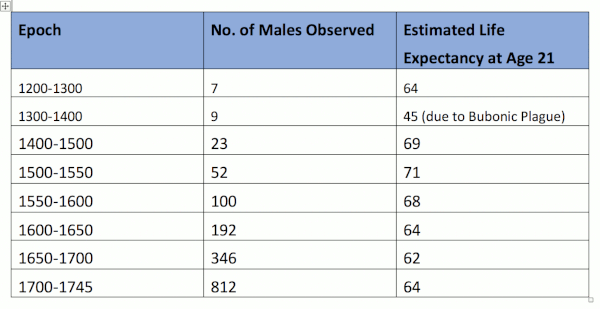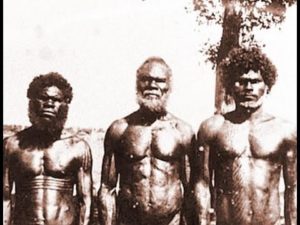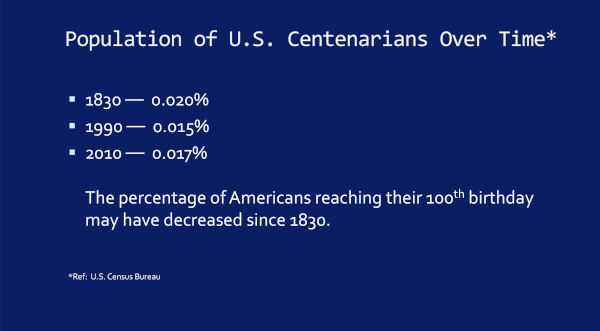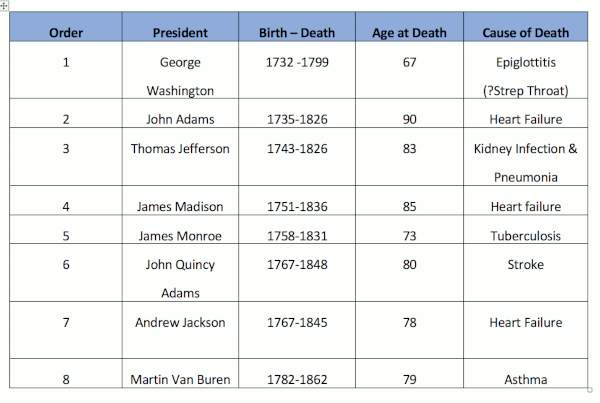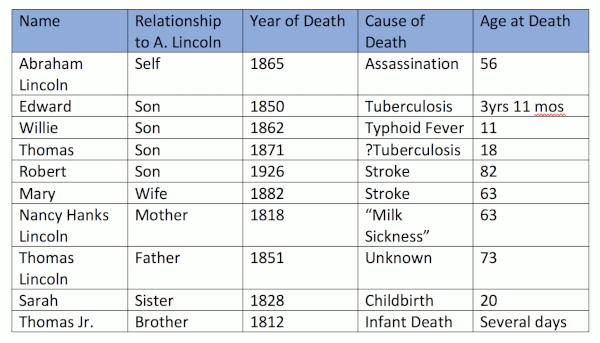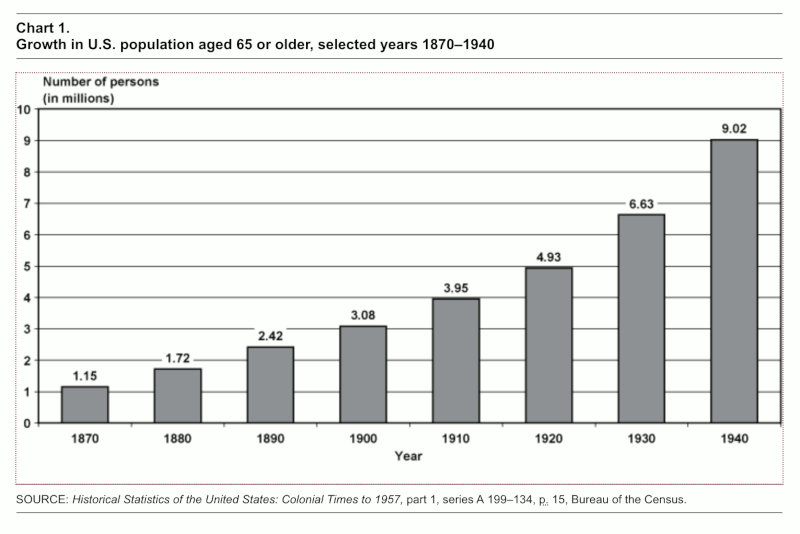Let’s move from hypothetical examples and examine actual worldwide populations, to further understand the blindness epidemic caused by AMD in the 19th and 20th centuries.
High Childhood Mortality Results in Short Life Expectancy for Populations
Regarding the average age of death being 49.3 years in 1900 in the U.S., this is definitely true.11 And it’s definitely not because most people were dropping dead around the age of 50.
Let’s look at why this is.
- In 1800, 43.3% of children, worldwide, did not survive the first five years of life.12
- A century later, surviving childhood wasn’t much better. In 1900, 36.2% of children did not survive the first five years of life, worldwide.6
- In the U.S. in 1800, 46.3% of children died before their 5th birthday, and this rate dropped in half by 1900, to 23.2%.6
- Even in France, 22.5% of children born in 1900 did not survive to their 5th birthday, and this number was 15.6% in Sweden that year.6
- Norway had the lowest childhood mortality rate in the year 1900, with 13.4% of children not surviving to their 5th birthday.6
- In that same era (late 19th to early 20th century), around 4% of women, in total, died in childbirth. The risk of death in childbirth was about 1 to 1.5% per birth, with a lifetime risk of about 4 percent.13
- In 2015, child mortality worldwide was down to 4.3%, which is ten-fold lower than the two centuries previous. This, of course, raises the LEB dramatically. This increase in survival of childhood is primarily due to clean water, septic systems, antibiotics, obstetrics, and pediatrics.
The graphs below, courtesy of Max Roser at Our World in Data (www.OurWorldInData.org), show child mortality, which is the percentage of children not surviving to the age of 5 years, by country, worldwide. I’ve selected the years 1800, 1850, 1900, 1950, and 2015 for comparison.






This extraordinary compilation and presentation of data indicate that through much of our history and up until around 1950 and beyond, the average life expectancy was drastically reduced secondary to extreme levels of childhood mortality.
As you’re about to see, for those who survived childhood and some dreaded infectious diseases, living into old age was common; not quite as common as today, but nevertheless, common.
Survival to Elderly Age in England and Wales — 19th to 21st Centuries
Below, we see a graph prepared, once again, by Max Roser at Our World in Data, which shows the share of people in England and Wales surviving to various ages and for various years.

In England and Wales, in the years 1851, 1891, 1911, and 1931, the following table demonstrates the percentages of the population surviving to ages 50, 60, 70, 80, and 90, taken from the Our World in Data graph above.
As we can see from the table, even as far back as 1891 (highlighted in the table above), in England and Wales, 55% of the population survived to age 60, 43% to age 70, 22% to age 80, and 6% to age 90.
And in 1911, 51% of the population in England and Wales survived to age 70.
In the U.K., in 1900, 23.2% of children did not survive to see their 5th birthday, but more than 43% survived beyond age 70.
So much for people not living long enough to develop AMD in the year 1900, huh?
Life Expectancy for English Aristocracy in the Years 1200 to 1745
Genealogical records for noble families of Europe are maintained very accurately and sufficient numbers of nobility existed to make accurate calculations with minimal sampling errors, according to the research of H.O. Lancaster.14
Omitting those that died due to accidents, violence, poison, or in battle, the table below shows life expectancy for males who survived to age 21, along with the associated period of time, and the number of males observed for that period.
Notably, for royal families as far back as 1200 to 1745, we see that life expectancy for those who survived to age 21 ranged from a low of 62 to a high of 71. Furthermore, because this is an arithmetic mean, that means that from 1500 to 1550 when the estimated life expectancy was 71, for example, likely just as many men died before age 60 as after age 80.
Multiple different sources confirm similar findings for life expectancy of scholars in the Medieval Islamic world, which ranged from 59 to 84.3 years.15,16,17,18
In any case, as far back as the 13th century, populations were surviving into their 60s, 70s, and 80s, without question. Undoubtedly, there’s never been a time in history when people didn’t survive long enough to develop macular degeneration, that is, beyond age 50.
Twenty Five Percent of Inuit Between 1822 1836 Survive Beyond Age 60
Nutrition researcher, neuroscientist, and obesity researcher, Stephan Guyenet, Ph.D., formerly of the University of Washington, addressed this issue in an article entitled, “Mortality and Lifespan of the Inuit,” wherein he wrote:
One of the classic counter-arguments that’s used to discredit accounts of healthy hunter-gatherers is the fallacy that they were short-lived, and thus did not have time to develop diseases of old age like cancer. While the life expectancy of hunter-gatherers was not as high as ours today, most groups had a significant number of elderly individuals, who sometimes lived to 80 years and beyond. Mortality came mostly from accidents, warfare and infectious disease rather than chronic disease.19
He found a “mortality table from the records of a Russian mission in Alaska, which recorded the ages of death of a traditionally living Inuit population during the years 1822 to 1836.” Note that, as Guyenet asserts,
Excluding infant mortality, about 25% of their population lived past 60.
He estimates that Westerners had a similar life expectancy at that time.

Deaths Per 1,170 Inuit, Years 1822 – 1836. The bins represent the number of deaths per each age category, out of the total population, along the Y-axis (vertical), with the age brackets at death along the X-axis (horizontal).
As we can see from the table prepared by Dr. Guyenet, the maximum lifespan of the Inuit, as shown here between the years 1822 and 1836, is basically the same as Americans today, i.e., around 100. The average life expectancy is lower, but once again is due primarily to high childhood mortality.
Most Common Age of Death for Hunter-Gatherers is 72
Researchers Michael Gurven and Hillard Kaplan, in a paper published in Population and Development Review, entitled “Longevity Among Hunter-Gatherers: A Cross-Cultural Examination,” analyzed “mortality profiles obtained from small-scale hunter-gatherer and horticultural populations from around the world,” and determined that the typical “adaptive” lifespan of our evolutionary Homo sapiens ancestors was 68 to 78 years. They determined that the modal (most common) age of death for hunter-gatherers who survived past the age of 15 years, was 72.20
Lower Likelihood of Reaching Age 100 Today than in 1830
This is data from our own U.S. Census Bureau regarding the likelihood of reaching age 100 years, by any given year. Notice that the likelihood of reaching age 100 today is lower today than it was in 1830. It appears that fewer people, on a per capita basis, reach the centenarian mark today, than they did nearly two hundred years ago.
A Few Real-Life Examples
Now finally, just for your perusal, let’s take a look at some other interesting real life examples associated with this whole subject.
The First Eight U.S. Presidents Age and Cause of Death
Just the first eight U.S. presidents average age at death was 79.4 years (average age of men’s death today, in the U.S. is 76) and the last of these eight to die was Martin Van Buren, in 1862.21,22
Prominent Figures in 19th Century Ophthalmology History
And perhaps for our ophthalmologist, optometrist, and vision scientist readers, If we look at the 19th century’s greatest contributors to the specialty of ophthalmology…
- Herman von Helmholtz, inventor of the ophthalmoscope, which made the retina (and the macula) visible, died at age 73 (1821 – 1894).
- Jonathan Hutchinson, first Ophthalmologist to describe macular degeneration, died at age 84 (1828 – 1913).
- Hermann Pagenstecher, who advanced intracapsular cataract surgery, died at age 88 (1844 – 1932).
- Otto Haab, who presented a critical paper in 1895, which confirmed the rarity of macular degeneration in Germany, died at age 81 (1850 – 1931).
- Ernst Fuchs, author of a famous textbook of ophthalmology in 1892, died at age 79 (1851 – 1930).
- Julius Hirschberg, famous for his textbook of ophthalmology as well as the Hirschberg test for assessing eye alignment, died at age 81 (1843 – 1925).
Abraham Lincoln and Family: Ages at Death and Causes of Death
Next, let’s take a look at the family of an American icon and our 16th U.S. president, Abraham Lincoln.
The examples in this famous 19th century family represent the reasons why the average life expectancy was so low in the 19th century and prior. And again, it’s not because people didn’t live to be elderly, but rather, because many died in childhood, mostly due to infectious diseases.
As we can see, Abraham Lincoln, who might well represent a rather typical family in the 19th century, lost three of his sons, all by 18 years of age. Edward at age 3 due to Tuberculosis, Willie at age 11 secondary to typhoid fever, and Thomas at age 18, perhaps due to Tuberculosis or a heart condition. Abraham’s brother died in infancy at just a few days old, and his sister died in childbirth at age 20. Robert, his only son to survive childhood, lived to the age of 82.
Quite frankly, in almost any review of history, one will find men and women living into their 7th, 8th, and 9th decades, and beyond. It’s no different than today, in terms of maximum lifespan. Even the famous Greek physician, Hippocrates, is thought to have lived from 460 BCE to 370 BCE, a period of 90 years.23
Even the Bible references this; the King James Version (KJV) Psalms 90:10 reads, “The days of our years are threescore years and ten; and if by reason of strength they be fourscore years, yet is their strength labour and sorrow; for it soon cut off, and we fly away.”
And the KJV Genesis 6:3 reads, “And the Lord said, My spirit shall not always strive with man, for that he also is flesh: yet his days shall be an hundred and twenty years.”
It’s rather provocative that the Bible states man’s life is 70 to 80 years, or perhaps a maximum lifespan of 120 years, correct? More than 2,000 years later, this is still what we see.
Let me conclude by repeating the only section in my book where I assumed I had answered the question about life expectancy around 1900 and AMD prevalence, as I mistakenly concluded that this – and this alone – would satisfy the concern that “we just didn’t live long enough to get AMD.”
1920 Nearly 5 Million People Over 65, Yet Virtually no AMD
“In 1920, the U.S. Census Bureau shows that there were 4.93 million people over the age of 65, as compared to 35 million over 65 by year 2000.” As we’ve witnessed, there were almost no reports of AMD in any U.S. literature. Jumping ahead a bit, by 1990, Professor Ron Klein, M.D., and colleagues, found that, “In persons 43 to 86 years of age, the overall prevalence of any ARM [age-related maculopathy, translates to dry AMD], was 20.9% and of late ARM it was 1.9%.” If the same prevalence rates existed in 1920, even if only considering the population over age 65 in the U.S., there should have been over 1.1 million people affected with AMD. The literature and textbooks would have literally been flooded with studies or reports on macular degeneration, yet there was near complete silence on the subject.24
As I state in my live presentations, if the prevalence of AMD in 1920 was the same as 1990 (22.8% total), which it should be if AMD is primarily a disease of aging and genetics, as is currently believed by conventional ophthalmology, then there should have been at least 1.1 million people with AMD in 1920 if we only consider those over the age of 65.
Yet, in 1920, AMD was still an extreme medical rarity.
______
This is Part Two of a three-part series.
See part one here.
See Part Three here.
References
- Knobbe, CA. (2016) Ancestral Dietary Strategy to Prevent and Treat Macular Degeneration. Springville, Utah: Vervante Corporation, pp. 14-30
- “Life expectancy,” Wikipedia, (n.d.). Retrieved from Wikipedia, Life Expectancy
- “Jeanne Calment,” Wikipedia, (n.d.). Retrieved from Wikipedia, Jeanne Calment
- Price, Weston A. 2003. Nutrition and Physical Degeneration. La Mesa, CA: Price-Pottenger Nutrition Foundation
- “Japan,” Wikipedia, (n.d.), Retrieved from Wikipedia.org
- Knobbe, CA. (2016) Ancestral Dietary Strategy to Prevent and Treat Macular Degeneration. Springville, Utah: Vervante Corporation, pp. 123-125
- Jones DS, Podolsky SH, Greene JA. The Burden of Disease and the Changing Task of Medicine. N Engl J Med 2012; 366:2333-2338 DOI: 10.1056/NEJMp1113569
- Ibid
- Cordain L, Eaton SB, Sebastian A, et al. Origins and evolution of the Western diet: health implications for the 21st century. Amer J Clin Nutr. 2005; 81(2)341-354
- “Social factors key to ill health.” BBC News. August 28, 2008. Presented August 28, 2008. Retrieved from BBC News
- Max Roser (2018) – “Life Expectancy”. Published online at OurWorldInData.org. Retrieved from Our World in Data [Online Resource]
- Max Roser (2018) – “Child Mortality”. Published online at OurWorldInData.org. Retrieved from Our World in Data [Online Resource]
- Cellania M. “The Historical Horror of Childbirth.”(May 9, 2013) MentalFloss.com. Available from Mental Floss
- Lancaster HO. Expectations of Life A Study in the Demography, Statistics, and History of World Mortality. New York, NY, Springer-Verlag, p. 8
- Jaques, R. Kevin. (2006). Authority, Conflict, and the Transmission of Diversity in Medieval Islamic Law. Brill Publishers., p. 188. ISBN 978900414754
- Ahmad, Ahmad Atif (2007), “Authority, Conflict, and the Transmission of Diversity in Medieval Islamic Law by R. Kevin Jaques,” Journal of Islamic Studies. 18(2):246-248, doi:10.1093/jis/etm005
- Bulliet, Richard W. (1983), “The Age Structure of Medieval Islamic Education,” Studia Islamica, 57:105-117, doi:10.2307/1595484
- Shatzmiller, Maya (1994), Labour in the Medieval Islamic World, Brill Publishers, p. 66, ISBN: 9004098968
- Guyenet S. “Mortality and Lifespan of the Inuit.” Whole Health Source, (July 5, 2008), Retrieved from wholehealthsource.blogspot.com
- Gurven M, Kaplan H. Longevity Among Hunter-Gatherers: A Cross-Cultural Examination. Population and Development Review, 29 May 2007, https://doi.org/10.1111/j.1728-4457.2007.00171.x
- “List of Presidents of the United States by date of death,” Wikipedia, (n.d.). Retrieved from Wikipedia, List of Presidents
- “List of Presidents of the United States,” Wikipedia, (n.d.). Retrieved from Wikipedia, List of Presidents
- “Hippocrates Biography.” Biography, (n.d.), Retrieved from https://www.biography.com/
- Knobbe, CA. (2016) Ancestral Dietary Strategy to Prevent and Treat Macular Degeneration. Springville, Utah: Vervante Corporation, p. 21



